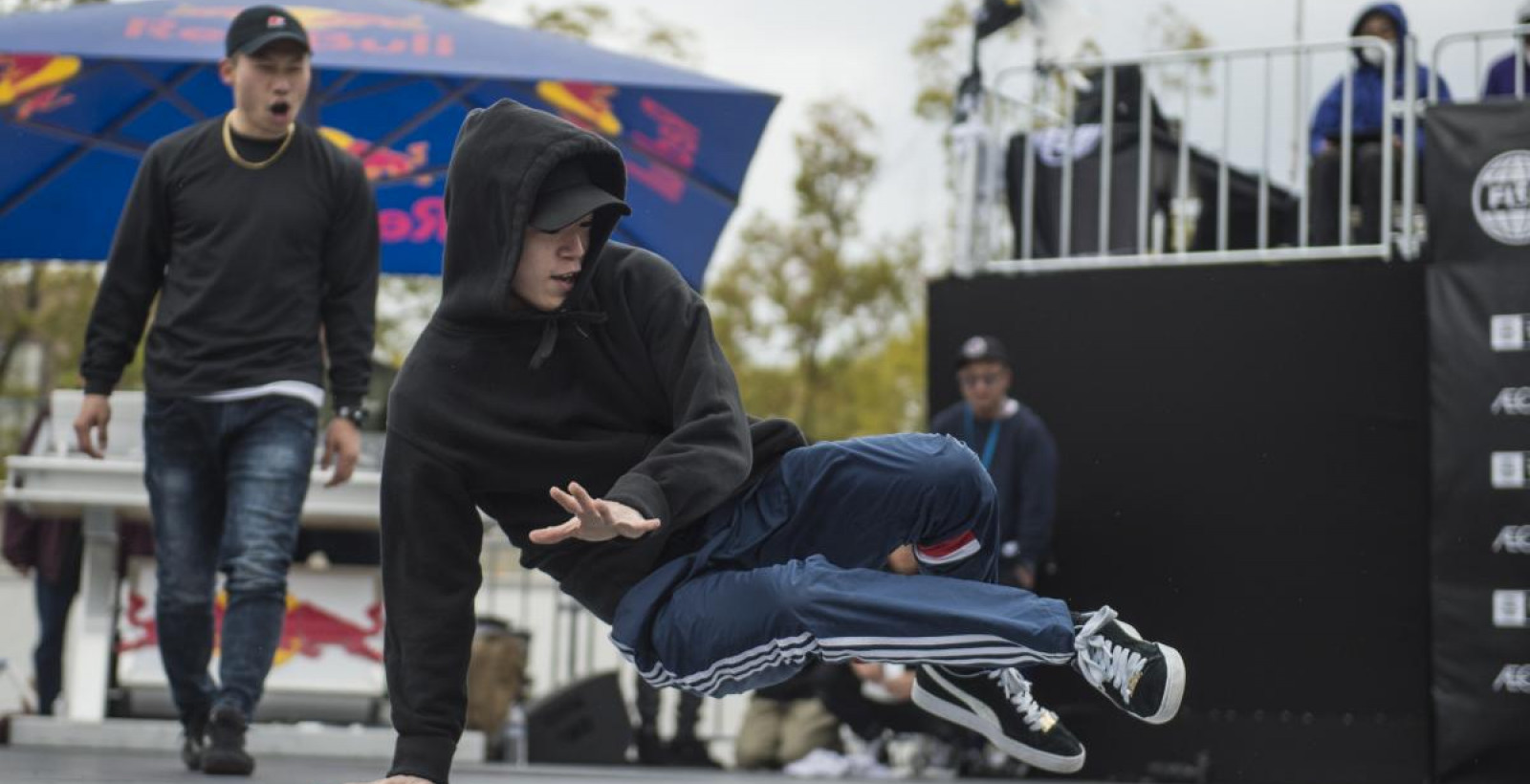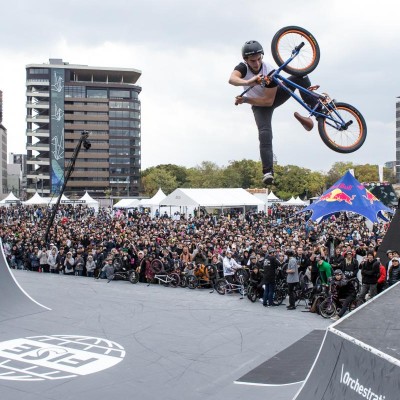FISE Hiroshima
Breaking onto the scene
11 Apr 2019
15:36
Since the early 1970s, b-boying/b-girling, or breaking has been gaining popularity right around the world. First called ‘breakdancing’ by the ’80s media, the number of competitions in this athletic dance style has been growing year on year.
Returning to FISE Hiroshima next week, here’s a bit more info on this must-see event.
Competitive Breaking
Each competition, between two individuals or teams, has a fixed number of rounds. Athletes (breakers) perform a combination of dance moves across three principal breaking elements.
Top Rock: performed standing up; often used to start a routine before floor work.
Down Rock: a variety of floor moves that include leg and footwork, power moves, spins, drops, flips, and transitions – using hands/backs/stomachs.
Freezes: a solid shape is held with no movement at all, requiring balance and strength; provide contrast to constant motion of the previous elements.
Scoring
An uneven panel of at least three judges scores each breaker on 3 criteria: Body, Soul, and Mind.
Body: physical quality, composed of technique and variety.
Soul: interpretive quality, composed of performativity and musicality.
Mind: artistic quality, composed of creativity and personality.
Why Getting Down is Up-and-Coming
After its 2018 debut at the Youth Olympic Games in Buenos Aires, breaking is moving towards recognition as an Olympic sport. The International Olympic Committee believes it fits with their goal of making the Olympics ‘gender-balanced, more youth-focused and more urban’. Paris’ organisers have proposed that breaking is added to the 2024 Games – a massive boost for the sport.
With legends like Lil Zoo set to take the stage at FISE Hiroshima on the 19 April, breaking competition promises an electric atmosphere and mind-boggling performances. Follow all the head-spinning action on our Facebook, Twitter, and Instagram pages!
Related event




